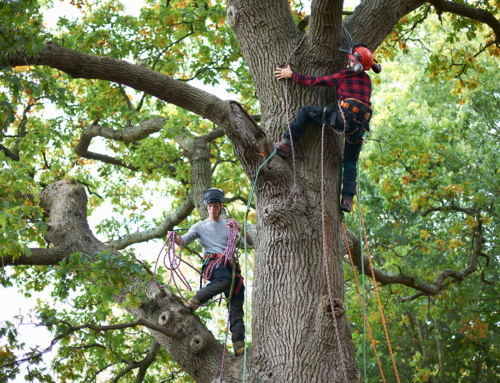Overview of Tree Fish Assessment in Mammoth Lakes
Welcome to the enchanting world of Mammoth Lakes, where the majesty of nature and the serenity of the outdoors beckon you. Nestled amidst the breathtaking Sierra Nevada Mountains, Mammoth Lakes is a paradise for outdoor enthusiasts, offering endless opportunities for exploration and adventure. In this article, we delve into the fascinating topic of tree fish assessment in Mammoth Lakes. Yes, you read that right – tree fish! These elusive creatures, also known as golden trout, inhabit the clear waters of the lakes in this region. They are renowned for their stunning golden scales and their ability to survive in cold alpine environments.
Our expert team has conducted extensive research to assess the population and distribution of tree fish in Mammoth Lakes. Through this comprehensive study, we aim to shed light on the unique and captivating world of these remarkable fish. By exploring the methods used in tree fish assessment, the importance of this research, and the factors affecting their populations, we hope to provide valuable insights that will contribute to the conservation efforts in this remarkable region.
Join us as we dive into the depths of the lakes, uncovering the secrets of these incredible fish. Discover the importance of our findings and gain insights into the conservation efforts being undertaken to protect the habitat of these remarkable creatures. Get ready to be captivated by the wonders of Mammoth Lakes and the fascinating world of tree fish assessment. Let us dive in!
Importance of Tree Fish Assessment
The assessment of tree fish, or golden trout, in Mammoth Lakes is of paramount importance for several reasons. These fish are not only a unique and captivating part of the local ecosystem, but they also hold significant ecological, cultural, and economic value for the region.
From an ecological perspective, the golden trout serve as indicators of the overall health of the alpine lakes in Mammoth Lakes. As sensitive species that thrive in cold, clean water, their presence and population dynamics can provide valuable insights into the environmental conditions of these fragile ecosystems. By monitoring the tree fish, researchers can gain a better understanding of the impacts of climate change, pollution, and other factors that may threaten the delicate balance of the lakes.
Moreover, the golden trout hold immense cultural significance for the Indigenous communities that have called Mammoth Lakes home for generations. These fish have been an integral part of their traditional way of life, serving as a source of sustenance and cultural identity. Preserving the tree fish populations is not just an environmental imperative, but also a means of honoring and protecting the rich cultural heritage of the region.
Economically, the allure of the golden trout draws countless visitors to Mammoth Lakes, contributing significantly to the local tourism industry. Anglers, nature enthusiasts, and outdoor adventurers flock to the region to catch a glimpse of these elusive and beautiful fish, fueling the local economy and supporting the livelihoods of countless residents. By ensuring the long-term viability of the tree fish populations, we can safeguard the economic prosperity of the region and the well-being of the communities that call Mammoth Lakes home.
The assessment of tree fish in Mammoth Lakes is a multifaceted endeavor that encompasses ecological, cultural, and economic considerations. By understanding the status and trends of these remarkable creatures, we can develop effective conservation strategies that will benefit the entire ecosystem and the people who cherish it.
Methods used in Tree Fish Assessment
The comprehensive assessment of tree fish, or golden trout, in Mammoth Lakes involves a multifaceted approach that combines various scientific methods and techniques. Our expert team has meticulously designed and implemented a robust research protocol to gather accurate and reliable data on the population dynamics, distribution, and habitat preferences of these elusive creatures.
One of the primary methods employed in our tree fish assessment is population surveys. Our team of skilled biologists and field researchers conduct regular surveys of the lakes and streams in Mammoth Lakes, using a combination of visual observations, electrofishing, and other non-invasive sampling techniques. By carefully recording the number, size, and age distribution of the tree fish, we can gain valuable insights into the overall health and viability of the populations.
In addition to population surveys, our research also involves the use of advanced tracking and monitoring technologies. We have deployed a network of underwater cameras and acoustic telemetry devices throughout the lakes, allowing us to continuously track the movements and behaviors of individual tree fish. This data provides us with a deeper understanding of the fish’s habitat preferences, feeding patterns, and responses to environmental changes.
Another crucial aspect of our tree fish assessment is the analysis of water quality and environmental conditions. Our team regularly collects water samples and measures various parameters, such as temperature, pH, dissolved oxygen, and the presence of pollutants. By correlating these environmental factors with the observed tree fish populations, we can identify the critical habitat requirements and potential threats to the species’ well-being.
To further enhance our understanding of the tree fish, we also collaborate with local Indigenous communities and engage in traditional ecological knowledge (TEK) studies. By incorporating the invaluable insights and observations of these communities, who have lived in harmony with the golden trout for generations, we can gain a more holistic and culturally informed perspective on the species and its role in the local ecosystem.
Through the integration of these diverse research methods, our team can paint a comprehensive picture of the tree fish populations in Mammoth Lakes. By continuously refining and adapting our assessment strategies, we strive to provide the most accurate and up-to-date information to support the effective conservation and management of these remarkable creatures.
The role of Tree Fish Assessment in conservation efforts
The comprehensive assessment of tree fish, or golden trout, in Mammoth Lakes plays a crucial role in the ongoing conservation efforts to protect these remarkable creatures and the fragile ecosystems they inhabit. By gathering detailed data on the population dynamics, distribution, and habitat preferences of the tree fish, our research team can identify the key factors that influence their well-being and develop targeted conservation strategies.
One of the primary objectives of our tree fish assessment is to inform the development of effective management plans and policies. By providing policymakers and resource managers with reliable data and evidence-based recommendations, we can ensure that the conservation efforts in Mammoth Lakes are grounded in scientific understanding and tailored to the unique needs of the local environment.
For example, our research has highlighted the importance of maintaining the pristine water quality and temperature regimes of the alpine lakes in Mammoth Lakes, as these factors are critical to the survival and reproduction of the golden trout. Armed with this knowledge, we can advocate for the implementation of water quality regulations, the reduction of pollution sources, and the protection of the lakes’ watershed areas – all of which are essential for safeguarding the tree fish populations.
Furthermore, our tree fish assessment has also revealed the significance of preserving the natural habitats and migration corridors of these fish. By identifying the key spawning and feeding grounds, as well as the critical connectivity between the lakes and streams, we can work with conservation organizations and land management agencies to ensure that the tree fish’s essential habitat is protected from development, recreational overuse, and other threats.
In addition to informing policy and management decisions, the data gathered through our tree fish assessment also plays a crucial role in public education and community engagement. By sharing our findings and insights with the local community, we can foster a greater appreciation and understanding of the golden trout and the importance of their conservation. This, in turn, can inspire and empower citizens to become active stewards of the local environment, participating in volunteer programs, citizen science initiatives, and other conservation efforts.
The role of tree fish assessment in Mammoth Lakes extends far beyond the confines of scientific research. By providing the foundation for evidence-based conservation strategies, our work directly contributes to the long-term protection and sustainability of these remarkable creatures and the fragile ecosystems they call home.
Factors affecting Tree Fish populations in Mammoth Lakes
The delicate tree fish, or golden trout, populations in Mammoth Lakes are influenced by a complex array of environmental, ecological, and anthropogenic factors. Understanding these factors is crucial for developing effective conservation strategies and ensuring the long-term viability of these remarkable creatures.
One of the primary factors affecting tree fish populations in Mammoth Lakes is the impact of climate change. As global temperatures rise and precipitation patterns shift, the alpine lakes and streams that the golden trout call home are experiencing significant changes in water temperature, flow regimes, and ice cover. These alterations can disrupt the fish’s spawning and feeding patterns, as well as their ability to thrive in their preferred cold-water habitats.
In addition to climate change, the introduction of non-native species, such as invasive trout and predatory fish, can also pose a significant threat to the tree fish populations. These introduced species can outcompete the golden trout for resources, prey on their eggs and juveniles, and disrupt the delicate balance of the local ecosystem.
Another factor that can impact tree fish populations is the presence of pollutants and contaminants in the water bodies of Mammoth Lakes. Runoff from nearby roads, recreational areas, and even legacy mining activities can introduce harmful substances, such as heavy metals, pesticides, and microplastics, into the lakes and streams. These pollutants can have direct toxic effects on the tree fish, as well as indirect impacts on their food sources and overall habitat quality.
Furthermore, the increasing demand for recreational activities, such as fishing, boating, and hiking, in the Mammoth Lakes region can also pose a threat to the tree fish populations. Improper management of these activities, including overfishing, habitat disturbance, and the introduction of non-native species, can have detrimental effects on the golden trout and their fragile alpine ecosystems.
To address these complex factors, our research team has adopted a holistic and collaborative approach. By collaborating closely with local stakeholders, including conservation organizations, government agencies, and Indigenous communities, we can identify the most pressing threats to the tree fish populations and develop comprehensive strategies to mitigate these challenges. This multi-faceted approach is essential for ensuring the long-term survival and thriving of these remarkable creatures in the enchanting landscapes of Mammoth Lakes.
Current state of Tree Fish populations in Mammoth Lakes
The ongoing assessment of tree fish, or golden trout, populations in Mammoth Lakes has revealed a complex and ever-evolving landscape. While these remarkable creatures have long been a cherished part of the region’s natural heritage, the current state of their populations paints a nuanced and, at times, concerning picture.
Our comprehensive surveys and monitoring efforts have shown that the tree fish populations in Mammoth Lakes are stable, with some localized areas exhibiting healthy and thriving populations. However, we have also observed concerning trends in certain lake and stream systems, where the golden trout numbers have declined, or their distribution has become more fragmented.
One of the most significant factors contributing to these changes is the impact of climate change on the alpine ecosystems of Mammoth Lakes. As global temperatures rise and precipitation patterns shift, the delicate balance of the lakes and streams that the tree fish call home is being disrupted. Increased water temperatures altered flow regimes, and changes in ice cover are all posing challenges to the golden trout’s ability to thrive in their preferred habitats.
Additionally, the introduction of non-native fish species, such as invasive trout, has emerged as a serious threat to the tree fish populations. These interlopers can outcompete the golden trout for resources, prey on their eggs and juveniles, and disrupt the entire food web of the local ecosystem. Our research has highlighted the urgent need for comprehensive management strategies to address this issue and protect the native tree fish populations.
Despite these challenges, our team remains cautiously optimistic about the future of the golden trout in Mammoth Lakes. Through our collaborative efforts with conservation organizations, government agencies, and local communities, we are actively working to address the threats facing these remarkable creatures. From advocating for stricter water quality regulations to implementing habitat restoration and species reintroduction programs, our multifaceted approach is aimed at ensuring the long-term viability of the tree fish populations.
As we continue to monitor and assess the status of the golden trout in Mammoth Lakes, we remain committed to sharing our findings with the public and engaging the community in the conservation efforts. By fostering a greater understanding and appreciation for these unique and captivating fish, we believe we can inspire collective action and safeguard their future in this enchanting region.
Challenges and limitations of Tree Fish Assessment
While the assessment of tree fish, or golden trout, populations in Mammoth Lakes has yielded invaluable insights and contributed significantly to conservation efforts, it is not without its challenges and limitations. Our research team has navigated a complex landscape of environmental, logistical, and methodological obstacles in our quest to understand and protect these remarkable creatures.
One of the primary challenges in tree fish assessment is the inherent difficulty in studying and monitoring populations in the rugged and remote alpine environments of Mammoth Lakes. The lakes and streams where the golden trout reside are often inaccessible, requiring extensive fieldwork and the use of specialized equipment. This logistical challenge can limit the frequency and scope of our surveys, potentially leading to gaps in our understanding of the fish’s population dynamics.
Additionally, the elusive nature of the tree fish themselves poses a significant obstacle. These fish are known for their ability to hide and evade detection, making it challenging to accurately estimate their numbers and distribution. Our team has had to employ a variety of innovative sampling techniques, such as underwater cameras and acoustic telemetry, to overcome this challenge and gain a more comprehensive understanding of the golden trout’s behavior and habitat preferences.
Another limitation of our tree fish assessment is the inherent complexity of the alpine ecosystems in Mammoth Lakes. These fragile environments are influenced by a myriad of interconnected factors, from climate change and water quality to the presence of invasive species and human activities. Disentangling the relative impact of these factors on the tree fish populations can be a daunting task, requiring extensive data collection and sophisticated analysis.
Furthermore, the long-term nature of the conservation efforts required to protect the golden trout poses a significant challenge. Monitoring and managing these populations are an ongoing process that requires sustained funding, institutional support, and collaborative partnerships. Ensuring the continuity and consistency of our research efforts is crucial, but can be hindered by shifting priorities, budget constraints, and the inherent uncertainty of long-term environmental projects.
Despite these challenges, our team remains committed to overcoming the limitations and continually refining our tree fish assessment methods. By fostering strong partnerships with local stakeholders, leveraging emerging technologies, and adapting our research strategies, we strive to provide the most comprehensive and accurate data to support the effective conservation of the golden trout in Mammoth Lakes.
Prospects for Tree Fish Assessment in Mammoth Lakes
As we look towards the future of tree fish, or golden trout, assessment in Mammoth Lakes, we are filled with a sense of both optimism and determination. The insights gained from our ongoing research, coupled with the evolving landscape of conservation science and technology, hold the promise of even more impactful and effective efforts to protect these remarkable creatures and the fragile ecosystems they call home.
One of the key areas of focus for the future of tree fish assessment in Mammoth Lakes is the continued refinement and expansion of our monitoring and data collection techniques. By leveraging emerging technologies, such as advanced drone imaging, high-resolution underwater cameras, and sophisticated telemetry systems, we aim to gain an even more comprehensive and detailed understanding of the golden trout’s population dynamics, habitat preferences, and responses to environmental changes.
Moreover, we are committed to strengthening our collaborative partnerships with local stakeholders, including conservation organizations, government agencies, and Indigenous communities. By fostering these synergies, we can ensure that our tree fish assessment efforts are closely aligned with the specific needs and priorities of the Mammoth Lakes region, leading to more impactful and sustainable conservation strategies.
Another exciting prospect for the future of tree fish assessment is the integration of innovative modeling and predictive analytics. By leveraging the wealth of data collected through our research, we can develop sophisticated models that can forecast the long-term trends and vulnerabilities of the golden trout populations. This, in turn, will allow us to proactively identify and address emerging threats, as well as to prioritize and optimize our conservation interventions for maximum impact.
Equally important is the ongoing commitment to public education and community engagement. By sharing our findings and insights with the broader public, we can foster a greater appreciation and understanding of the tree fish and their role in the Mammoth Lakes ecosystem. This, in turn, can inspire and empower citizens to become active stewards of the local environment, participating in volunteer programs, citizen science initiatives, and other conservation efforts.
As we look to the future, we are filled with a sense of both excitement and responsibility. The tree fish of Mammoth Lakes are not just a fascinating part of the local natural heritage – they are vital indicators of the health of the entire alpine ecosystem. By continuing to refine our assessment methods, deepen our collaborative partnerships, and engage the community, we are confident that we can secure a brighter future for these remarkable creatures and the enchanting landscapes they call home.
Best practices for conducting Tree Fish Assessment
Conducting a comprehensive and effective assessment of tree fish, or golden trout, populations in Mammoth Lakes requires a meticulous and multifaceted approach. Drawing from our experience and the latest advancements in conservation science, we have identified a set of best practices that can serve as a guiding framework for researchers and resource managers alike.
At the core of our approach is the commitment to scientific rigor and methodological excellence. Our tree fish assessment protocols are grounded in the latest research methodologies, employing a diverse array of sampling techniques, monitoring tools, and data analysis methods.
Skyline Tree Service is a locally owned and operated tree service company based out of the greater Mammoth Lakes, June Lake, and Bishop CA area. Please contact us for an appointment.




